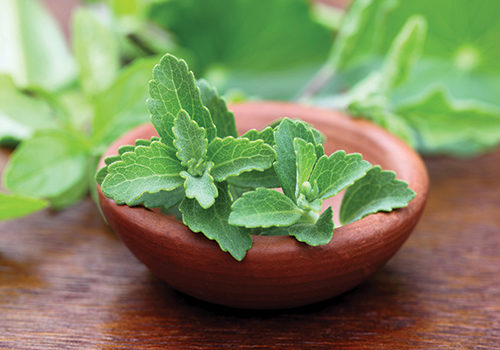From freshly baked cupcakes to Grandma’s warm apple pie, some of our most favorite comfort foods fall into the “high in sugar” category. Could there be a better way?
Diabetic-Friendly Options
While many shoppers want to lower their sugar intake, a core group of shoppers has a heightened level of awareness about anything sweet that touches the tongue: diabetics.
Roughly 29.1 million people in the United States, or about 9.3% of the population, have diabetes (1). Given these huge numbers, there is an excellent chance that many of your shoppers are diabetics with a strong interest in natural sweeteners that won’t spike their blood sugar levels.
Michael May, chief operating officer of Wisdom Natural Brands, Gilbert, AZ, says stevia is beneficial for many consumers, especially diabetics, noting that his company’s branded stevia products (Sweetleaf) “offer a better-for-you sweetener for all people, especially diabetics.”
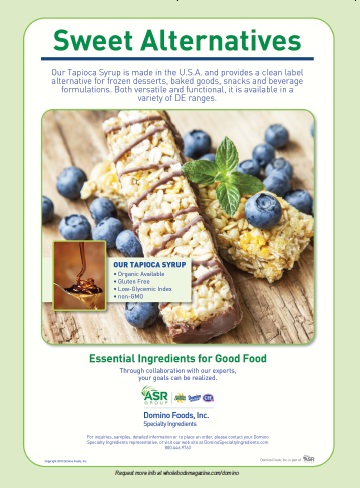 Stevia fans point to some specific benefits: “It’s a zero-calorie, natural sweetener that you need very little of because it is 300 times sweeter than sugar,” according to Josh Hahn, marketing manager of MycoTechnology, Inc., Aurora, CO. It also won’t harm the teeth.
Stevia fans point to some specific benefits: “It’s a zero-calorie, natural sweetener that you need very little of because it is 300 times sweeter than sugar,” according to Josh Hahn, marketing manager of MycoTechnology, Inc., Aurora, CO. It also won’t harm the teeth.
For all these reasons and more, Neil E. Levin, CCN, DANLA, nutrition education manager of NOW Foods, Bloomingdale, IL, believes, “The best diabetic-friendly sweetener is stevia.”
But, there’s another interesting angle that shoppers may want to know about. “This is a non-caloric, non-glycemic sweetener that may, in high quantities, support pancreatic functions including normal insulin production as well as maintaining proper insulin sensitivity,” Levin states.
Indeed, some research has been done on the topic. In one small-animal study, the effects of stevioside and steviol on insulin release from normal mouse islets were studied. In the end, both compounds “enhanced insulin secretion from incubated mouse islets in the presence of 16.7 mmol/L glucose” (2). In another study of 12 diabetics that took either 1 g of stevioside or 1 g of maize starch with a standard meal, stevioside reduced postprandial blood glucose levels (3).
Unfortunately, while stevia is a great option for many people, some shoppers may not find its bitter aftertaste to be very palatable. Levin says that the molecule known as terpenes is what causes the bitterness. “Terpenes are also the parent molecules for related phytochemical compounds—such as those in licorice and lo han (monk fruit)—but tend to convey a bitter, licorice-like flavor to foods,” he explains.
Hahn says removing this bitter metallic taste is not as straightforward as it seems. He states, “The challenge has been that the sweetness and bitterness of stevia both come from the same molecule; if you are to remove the bitterness, you also lose the sweetness.”
Companies have come up with several ways to deal with this issue. In 2008, for instance, a fractionated aftertaste-free stevia hit the market, and continues to sell well under the brand names of Truvia (from Cargill) and Pure Via (from PureCircle). But, what other innovations are underway?
It seems several firms are looking at enzymes to do the job of improving stevia’s taste profile.
According to Thom King, president of Steviva Ingredients, Portland, OR, “Great advancements in the extraction process coupled with the refining of the stevia leaf cultivar have dramatically reduced off notes in the flavor profile. Enzymatic treatment is showing a lot of promise in taking these results even further.”
Meanwhile, Hahn’s company is doing something unique on that front: using special mushroom technology to affect how we taste stevia. MycoZyme is a process that can selectively remove and change certain “flavor defects.” He says that mushroom enzymes can “block your ability to taste the bitterness while maintaining pure sweetness.” The firm has tested its process on various forms of stevia (raw leaves, crude extracts at 60% and Reb A at 95%, 97% and 99%), and feels it can remove the aftertaste.
Also looking at enzymes during processing is Levin’s company, which believes that the purest form of the whole leaf extract tastes and functions the best. He states, “We developed a more natural version of stevia with what we think is a better taste profile. NOW’s BetterStevia is called that because its unique certified organic processing naturally minimizes the bitter aftertaste often associated with stevia products.” Using an enzymatic extraction process, he feels the end product has all the benefits of stevia with a cleaner, sweeter taste.
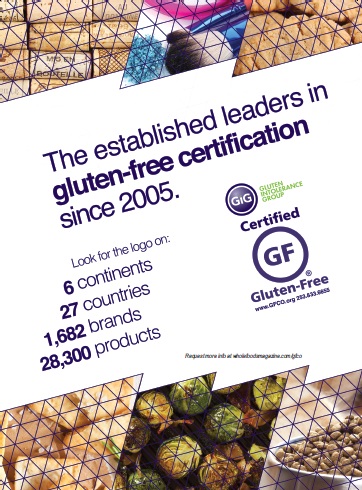 Enzymes are not the only show in town. May says his firm uses a different method, since he feels the aftertaste can “be minimized or eliminated using a specific composition of Stevia glycosides, the sweet compounds isolated from the plant Stevia rebaudiana.” He also says Wisdom Natural Brands has “developed a proprietary composition of Stevia glycosides that provides a crisp, sweet taste.”
Enzymes are not the only show in town. May says his firm uses a different method, since he feels the aftertaste can “be minimized or eliminated using a specific composition of Stevia glycosides, the sweet compounds isolated from the plant Stevia rebaudiana.” He also says Wisdom Natural Brands has “developed a proprietary composition of Stevia glycosides that provides a crisp, sweet taste.”
Meanwhile, ASR Group, has another technique. The firm recently launched stevia products (Zing Zero Calorie Stevia Sweetener) that combine a proprietary blend of stevia leaf extract, dextrose and natural flavors for sweetness without the aftertaste.
BENEO of Morris Plains, NJ, also pairs up stevia with another sweetener. Rudy Wouters, vice president of the BENEO-Technology Center, explains that his company offers the prebiotic fiber oligofructose, which is derived from chicory root and is naturally sweet. “It acts as both a sugar and fat replacer,” he states.
Wouters feels oligofructose is the perfect tool for combating the bitter aftertaste of stevia. He states, “Sensorial tests have proven that when stevia is combined with oligofructose, a sugar-like taste is created, which has none of the ‘off-taste’ that stevia is known for.”
Beyond sweet taste, Wouters states that oligofructose’s fat-replacement characteristics (e.g., body, roundness, fluidity and flavor) are helpful to food formulators. “One example of this is blending oligofrutose (liquid form) and stevia (powder form) at the fruit preparation stage to create a healthy, sugar-reduced fruit yogurt,” he states.
Another trend among stevia suppliers is investigating other rebaudiosides within the leaves. There are more than 40 different glycosides in stevia leaves, of which Rebaudioside A is one. As noted, companies have been selling this sweetener since 2008 when it received GRAS (generally recognized as safe) status in the United States. Now companies are interested in other Rebs. For instance, Pyure Brands recently launched a blend of Reb A, C and D and is non-GMO and made without any fermentation process (Pyure Trio).
Reb D is known for its sweet, smooth flavor profile, and has attracted interest from other players, too. Cargill, for instance, recently launched a Reb D and M mixture. The company is upfront about its process of using genetically engineered baker’s yeast that produce the target glycosides. When the yeast is removed, the company is left with Reb D and M (EverSweet), which it believes offers a clean, sweet taste without any bitter aftertaste.
Another option is monk fruit, which is 200 to 300 times sweeter than traditional table sugar. David Thorrold, general manager of sales and marketing at Monk Fruit Corp., Libertyville, IL, states, “Monk fruit is a great option for diabetics because it is great tasting and completely natural with a very low glycemic load.”
Early research on monk fruit found consumption lowered the serum glucose levels in animals (4). It is “likely due to its stimulation of pancreatic insulin secretion” (4).
“That’s why if someone who is diabetic wants a great-tasting and natural way to add sweetness to foods and beverages, monk fruit is the way to go,” says Thorrold.
But, like stevia, there are some limitations. “Monk fruit is a great alternative, but its citrus taste and high cost could limit its potential,” says Hahn.
Dave Allen, sales manager of North American Herb and Spice, Buffalo Grove, IL, recommends yacon root, a tuber that produces a nutritionally dense extract that is commonly used as a sweetener.
“The key to yacon is the FOS (fructooligosaccharide), which is an indigestible form of sugar,” says Allen. “FOS is what gives yacon such a delicious, sweet taste although it will not cause the same glycemic response as with other forms of sugar. Because of this, yacon is ideal for diabetics or those on a calorie-restricted diet.”
In a double-blind, placebo-controlled experiment, obese and pre-menopausal women were given two daily doses of yacon syrup (0.29 g and 0.14 g FOS/kg/day) over a 120-day period. The researchers found a decrease in fasting serum insulin as well as decreased body weight, waist circumference and body mass index. The researchers concluded, “its long-term consumption produced beneficial health effects on obese pre-menopausal women with insulin resistance” (5).
Another possible recommendation for diabetic-friendly alternatives is sweet potato juice concentrate, a multifunctional ingredient that can also serve as a sweetener, according to Nathan Holleman, vice president of marketing and sales for Carolina Innovative Food Ingredients, Nashville, NC.
“Diabetics will already be familiar with sweet potatoes as a food with an extremely low glycemic index,” says Holleman. “When juiced and concentrated, they perform really well as a sweetener in applications from baked goods to children’s fruit snacks to ketchup.”
The sweetener can take many forms, from dehydrated sweet potato granules to a juice.
Finally, Tetsuo Iida, Ph.D., head of rare sugar research and development for Matsutani America, Itasca, IL, suggests that allulose is a “perfect match for people with diabetes.”
This sweetener can be derived from many sources, including wheat, jackfruit, figs and raisins. “Allulose is one of the rare sugars that not only has physicochemical properties of normal sugars, but also has physiological functions,” says Iida. “It doesn’t raise blood glucose levels. It attenuates blood glucose levels and insulin secretion if you consume with sugar or other carbohydrate sources.”
In one crossover study of 20 healthy adults, it was found that 7.5 g of allulose did not negatively affect blood glucose or insulin concentration (6).
One also cannot count out xylitol, well known for its nasal and dental health properties. “Xylitol fools the bacteria in the mouth into consuming it as food, but they are unable to digest it,” says Levin. “As a result, bacterial growth can be reduced up to 90%.”
King recommends xylitol as a sweetener as well. “Xylitol adds the sweetness of sugar without the calories or the risk of dental caries. This polyol has a clean, distinct cooling flavor.”
He suggests that this ingredient helps “enhance mint flavors, yet it is a versatile sweetener that may be used in a variety of foods.”
What’s wrong with artificial? This is just a taste of the many natural sweeteners on the market, and shoppers will ultimately determine the ones that best work for them. But, many industry experts feel strongly that artificial sweeteners should not be in the mix for diabetics or anyone else looking to avoid sugar.
Holleman says, “From a marketing perspective, artificial sweeteners are a problem waiting to happen.” In fact, much research links artificial sweeteners to a variety of health issues.
“Whether those risks include causing users to crave more sweet foods and drinks, which may add excess calories, or whether there may be links to diabetes, we always encourage everyone to consult their physician with any questions,” states May.
A 2013 study analyzed self-reported data over 14 years from 66,118 French women about their consumption of sugar-sweetened beverages and artificially sweetened beverages. Both groups showed connections to increasing the risk of type-2 diabetes (7).
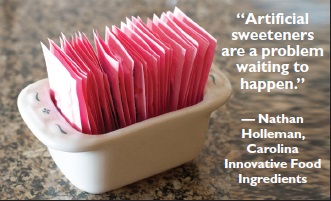 There are other potential issues, too. “Concerns about headaches, overstimulation of neurons (excitotoxicity) and potentially elevated cancer risks are perhaps the most common ones,” says Levin. “As the commercial used to say, ‘It’s not nice to fool Mother Nature!’”
There are other potential issues, too. “Concerns about headaches, overstimulation of neurons (excitotoxicity) and potentially elevated cancer risks are perhaps the most common ones,” says Levin. “As the commercial used to say, ‘It’s not nice to fool Mother Nature!’”
Some believe the evidence against the use of artificial sweeteners (and consumer backlash against them) is so compelling that some big-name companies are actually reformulating their products. “It wouldn’t be surprising to see artificial sweeteners going the way of artificial colors and flavors in the future, with brands almost universally abandoning them, solely due to consumer feedback,” says Holleman.
Of course, retailers should also keep in mind that no matter which high-intensity sweetener a diabetic chooses, he or she needs to look at the complete dietary picture. “The key is to manage the diet itself, which means counting the carbs in every recipe at every meal and snack occasion and balancing those carbohydrates with protein and fat,” say Richard Dyer, chief science and technology officer; Alexa Bosshardt, MPS, RDN, corporate research chef/registered dietitian; and Michelle Tittl, senior research scientist, all from ASR Group.
How Sweet It Is
While shoppers have several great options for high-intensity sweeteners, many consumers still favor sugar. But even here, there are choices. For instance, consumers may wonder about the difference between refined and naturally raw sugar. And what about cane sugar, palm sugar, coconut sugar and the like?
Levin says that all sugars are eventually converted to glucose in the body. More importantly, it is “the rate at which that occurs that is critically important in properly controlling blood sugar.”
According to the Cancer Center, natural sugars are “found in fruit as fructose and in dairy products, such as milk and cheese, as lactose“(8). This type of sugar, especially those found in fruit, slow the rate of metabolism in the body and gives the feeling of being full with the help of the vitamins, minerals, protein and fiber found in whole fruits (8).
On the other hand, refined sugar comes from sugar cane or sugar beets.
“A s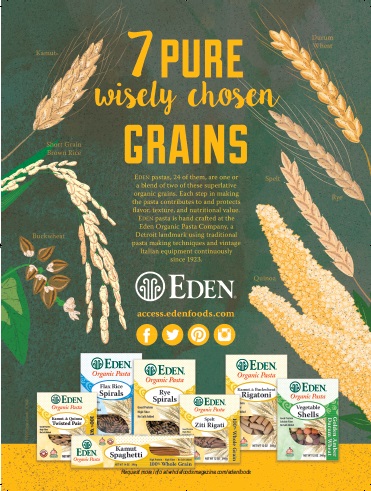 ugar refinery takes sugar crystals, already centrifuged and separated, and further refines them to produce a whiter, purer form of sucrose,” says Levin. “In the case of cane sugar, the coating of molasses on the crystals is removed at the refinery.”
ugar refinery takes sugar crystals, already centrifuged and separated, and further refines them to produce a whiter, purer form of sucrose,” says Levin. “In the case of cane sugar, the coating of molasses on the crystals is removed at the refinery.”
Once consumed, refined sugars are broken down quickly, causing insulin and blood sugar levels to spike. This fast pace often means that people feel less full than after eating whole foods with natural sugar in them (8). Unfortunately, consuming a lot of refined sugar has resulted in higher obesity rates in both adults and children. Obesity may increase one’s risk of developing heart problems, diabetes or even certain cancers (8).
The delivery format must be considered too. According to the experts from ASR Group, “Many health professionals agree that individual response to sweeteners can vary and the food or beverage in which the sweetener is consumed often is more closely related to how quickly the sugar is metabolized. In general, sugars (natural or refined) that are contained within a food that contains other nutrients, including fiber, or in a recipe, are more slowly metabolized than sugar consumed on its own.”
Better Baking
A true test of a natural sweetener is how well it bakes. Which sweeteners stack up?
Sugar often reigns supreme here for many bakers, and the reason goes beyond just sweetness and flavor. “Sugar enhances the volume of batter during the ‘creaming’ stage,” say Dyer, Bosshardt and Tittl, referring to when sugar is beaten with a fat. They state, “Sugar contributes tenderness and a soft crumb to a finished cake or muffin and holds moisture to prevent staling.”
There’s also sugar’s ability to brown and caramelize. “Caramelization happens with dry heat cooking, such as broiling, baking or frying and the sugar needs to reach a minimum of 300° F. before sugar will caramelize. With all that said, there aren’t a lot of substitutes for all the amazing properties sugars provide in baking,” say Dyer, Bosshardt and Tittl. “It is difficult to replace brown sugars in recipes due to the molasses flavor, moisture and brown color those sugars provide.”
But, there are some good alternatives to straight sugar. ASR Group combines pure cane sugar and stevia (Born Sweet Zing Baking Blend) to cut a recipe’s sugar content in half. “The combination of sugar and stevia leaf extract was developed based on consumer demand and allows for a cleaner sweetness profile while providing similar baking properties with fewer calories,” say Dyer, Bosshardt and Tittl.
Meanwhile, Thorrold suggests that monk fruit is as good of a baking alternative as it is a diabetic-friendly sweetener because “it is stable at high temperatures so you can bake at home with less sugar.”
Additionally, Holleman recommends sweet potato juice concentrate because it can help reduce sugar in certain baked goods like muffins. Holleman says, “The taste and browning properties are not an exact replacement for sugar, but may in fact be more desirable in certain products, contributing a warm, roasted flavor to products with caramel or spices.”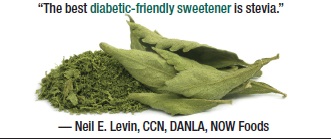
Holleman also says that this ingredient’s “warm profile makes it a good candidate as a sweetening ingredient in ready-to-drink beverages and other processed beverage blends.”
King’s baking alternative suggestion is non-GMO crystalline fructose because it “makes a great replacement for refined sucrose.”
He believes non-GMO crystalline fructose enhances flavor, reduces calories, browns nicely and adds moisture to baked goods. “It is derived from sugar, not from corn or high fructose corn syrup and is the sweetest of all naturally occurring, nutritive sweeteners,” he states.
Levin suggests that baking with sugar alcohols like xylitol can be tough. “The challenges there include a different mouth feel—sugar alcohols convey a cooling sensation—and the possibility of gas at higher levels of intake,” he says. He believes that different sugar alcohols show these side effects at different amounts. For example, the consumption of sorbitol may show these effects at as low as 10 grams and erythritol may not show any side effects.
To avoid these problems, Levin’s company offers a blend (NOW Real Food Sugarless Sugar) that combines several sugar alcohols for a “true one-to-one sugar replacement,” but contains one-third of the calories and no sugar.
What Else Should Bee on Your Shelves?
Another sweetener for your shelves is honey, which can be developed in many different ways.
“Typically, honey is minimally processed by the beekeeper,” says Damian Magista, founder of Bee Local, Portland, OR. “Honey is removed from the honeycomb by extracting. It’s then lightly filtered and placed into bulk storage; buckets, barrels or large totes.”
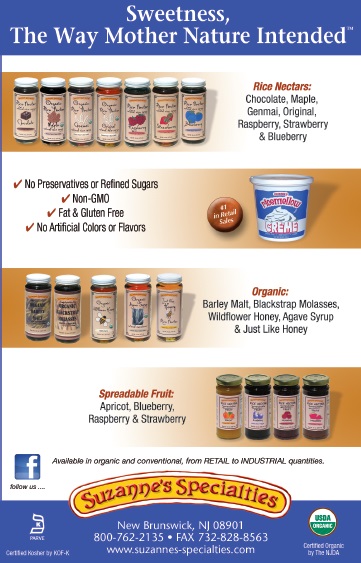 Once the honey is stored, according to Magista, it is sold to large honey packers. “This is where the processing happens,” he states, including filtatration.
Once the honey is stored, according to Magista, it is sold to large honey packers. “This is where the processing happens,” he states, including filtatration.
This step is important, says Levin, because natural honey contains impurities like pollen and enzymes. To filter the honey, it must be heated to hotter temperatures than a beehive will ever see. He adds, this “improves the flow of honey through pumps into jars and discourages honey from crystallizing into a solid state.”
Meanwhile, raw honey has grabbed the attention of many shoppers. “Raw honey means all the natural vitamins, living enzymes and other nutritional elements are preserved,” says Allen. “It is the most original sweet liquid that honeybees produce from the concentrated nectar of flowers.” He adds that this type of honey is also unheated, unpasteurized and unprocessed.
Magista says raw honey is never heated above about 110 degrees F. “Any higher than this and you begin to kill the flavor and cook the honey,” he believes.
But, according to Allen, this heating process is exactly what is wrong with other honeys. “Even if it is heated at modest temperatures, it destroys the delicate honey enzymes. Also, commercial honey is harvested from bees fed sugar or even high fructose corn syrup. Because of this ‘unnatural diet,’ commercial honey does not contain these natural plant extracts.”
This is why Levin says, “Most natural foods advocates prefer unfiltered raw honey over mass market alternatives.”
Some shoppers also like raw honey for its “exceptional nutritional value,” Allen states. According to the Nutritional Therapy Association, unprocessed, or raw, honey has become known as “a superfood that provides antioxidants, minerals, vitamins, amino acids, enzymes, carbohydrates and phytonutrients” (9).
Unfortunately though, for retailers, the price of honey is going to slowly rise, according to Magista, due to Colony Collapse Disorder (CCD), which is plaguing commercial beekeeping and agricultural practices.
“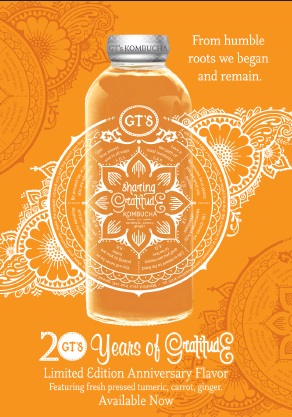 Colony Collapse is a syndrome—a variety of environmental factors that conspire to destroy a colony,” says Magista. “Six main factors have been identified to be responsible for CCD. These are: lack of genetic diversity, pesticides, malnutrition, parasites/disease, in-hive chemicals and migratory beekeeping practices.”
Colony Collapse is a syndrome—a variety of environmental factors that conspire to destroy a colony,” says Magista. “Six main factors have been identified to be responsible for CCD. These are: lack of genetic diversity, pesticides, malnutrition, parasites/disease, in-hive chemicals and migratory beekeeping practices.”
Magista says that several of these factors are due to commercial beekeeping, where colonies are often placed into mono-crop environments that have been sprayed with pesticides. He explains that honeybees need a wide variety of protein, carbohydrates, nectar and pollen to survive, which they do not get when they are placed with one type of crop. This also weakens the colony to a point where they are no longer able to fight diseases and parasites that attack the beehive.
“Meanwhile, the number of hives has decreased nationally, the cost of beekeeping has increased, the benefits of pollination (the largest effects on food supply of the beekeeping industry) are at risk, and the production of domestic honey has declined along with the number of healthy colonies,” says Levin. WF
For additional coverage of the grocery channel, see WholeFoodsMagazine.com/grocery
References
1. Centers for Disease Control and Prevention, “2014 National Diabetes Statistics Report.” http://www.cdc.gov/diabetes/data/statistics/2014statisticsreport.html, accessed Sept. 9, 2015.
2. P.B. Jeppesen et al., “Stevioside acts directly on pancreatic beta cells to secrete insulin: actions independent of cyclic adenosine monophosphate and adenosine triphosphate-sensitive K+-channel activity,” Metabolism 49 (2), 208–214 (2000).
3. S. Gregersen, et al., “Antihyperglycemic Effects Of Stevioside In Type 2 Diabetic Subjects,” Metabolism 53 (1), 73–76 (2004).
4. S. Sego, “Monk Fruit: A Natural Sweetener With Medicinal Properties,” Clinical Advisor, http://www.clinicaladvisor.com/alternative-meds-update/monk-fruit-a-natural-sweetener-with-medicinal-properties/article/340818, accessed Sept. 9, 2015.
5. S. Genta et al., “Yacon Syrup: Beneficial Effects on Obesity and Insulin Resistance in Humans,” Clin. Nutr. 28 (2), 182–187 (2009).
6. T. Iida et al., “Acute D-psicose Administration Decreased The Glycemic Responses To An Oral Maltodextrin Tolerance Test In Normal Adults,” J. Nutr. Sci. Vitaminol. (Tokyo), 54 (6), 511–514 (2008).
7. G. Fagherazzi et al., “Consumption Of Artificially And Sugar-Sweetened Beverages And Incident Type 2 Diabetes In The Etude Epidemiologique Aupres Des Femmes De La Mutuelle Generale De l'Education Nationale-European Prospective Investigation Into Cancer And Nutrition Cohort,” Am. J. Clin. Nutr. 97 (3), 517–523 (2013).
8. Cancer Treatment Centers of America, “Natural vs. Refined Sugars: What’s The Difference?” www.cancercenter.com/discussions/blog/natural-vs-refined-sugars-whats-the-difference, July 30, 2014, accessed Sept. 11, 2015.
9. Nutritional Therapy Association, “Reviving The Benefits Of Raw Honey: Going Back To Basics,” http://nutritionaltherapy.com/reviving-the-benefits-of-raw-honey-going-back-to-basics-by-dominique-eugene-ma-lmft-rpts-ntp-melinda-nelson-rdh-ntp-beekeeper, accessed Sept. 10, 2015.
Published in WholeFoods Magazine in November 2015

